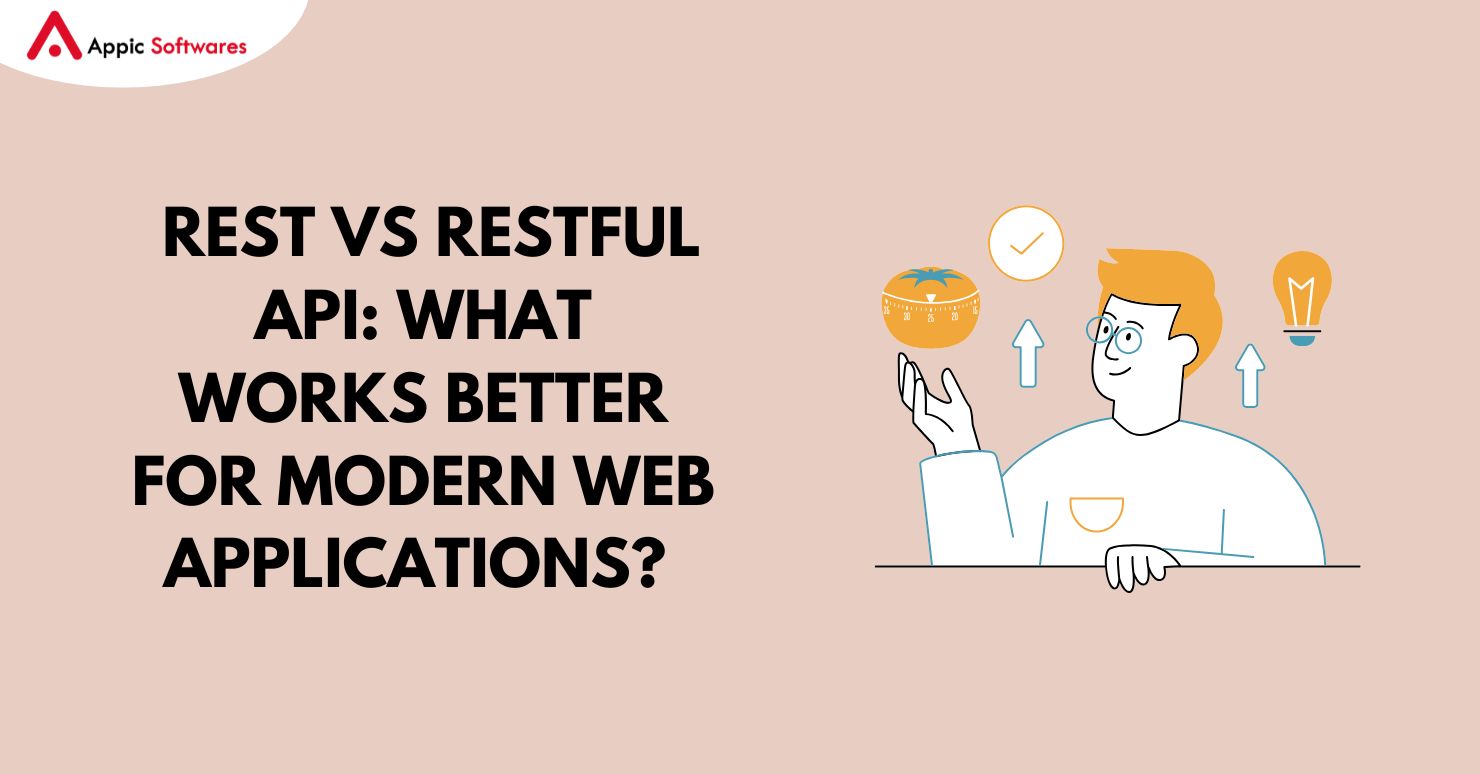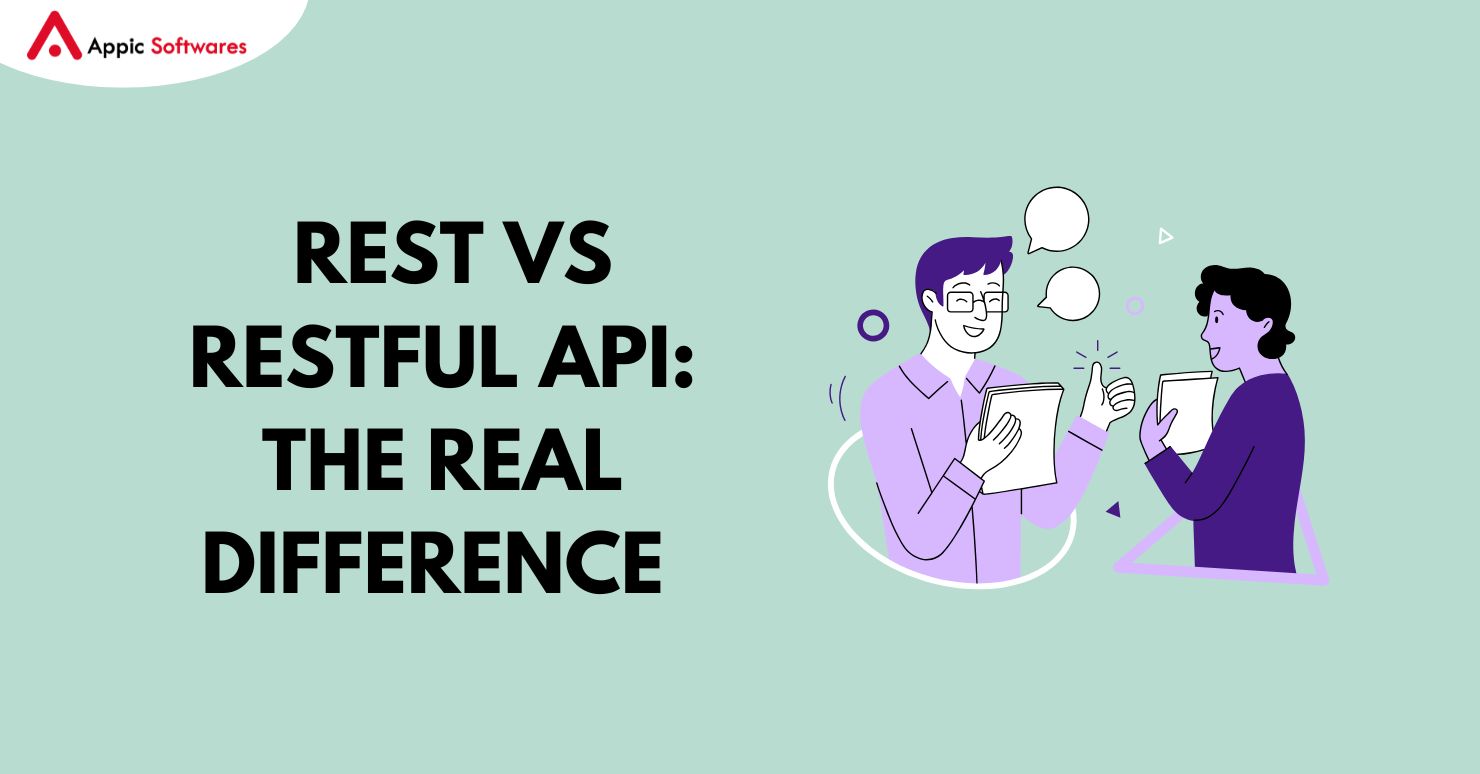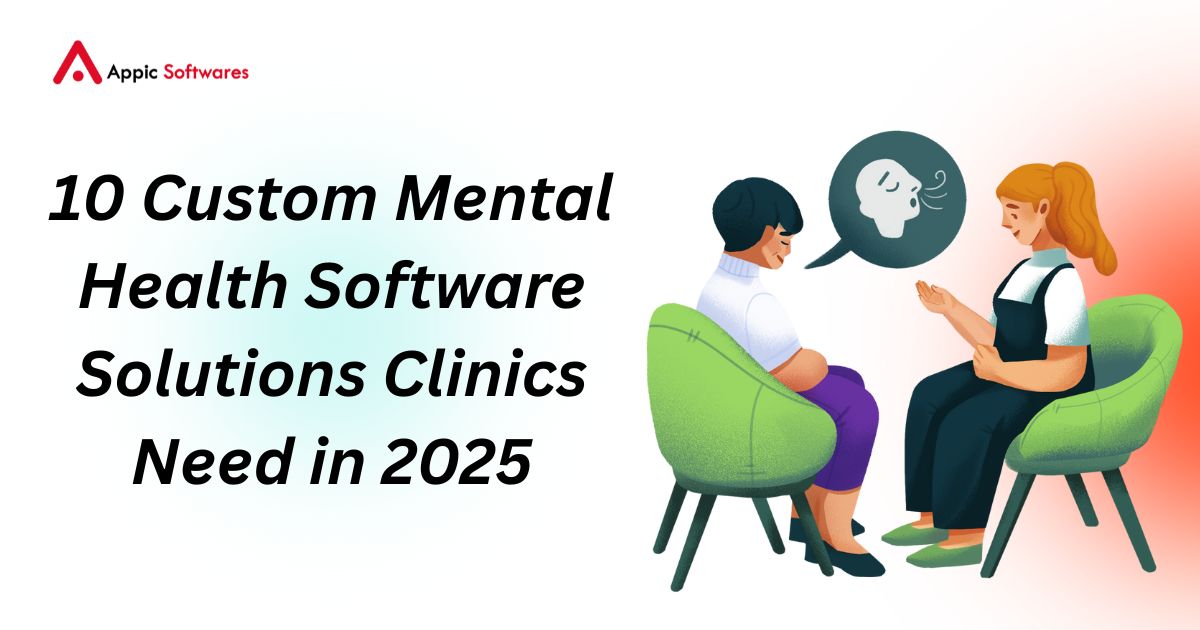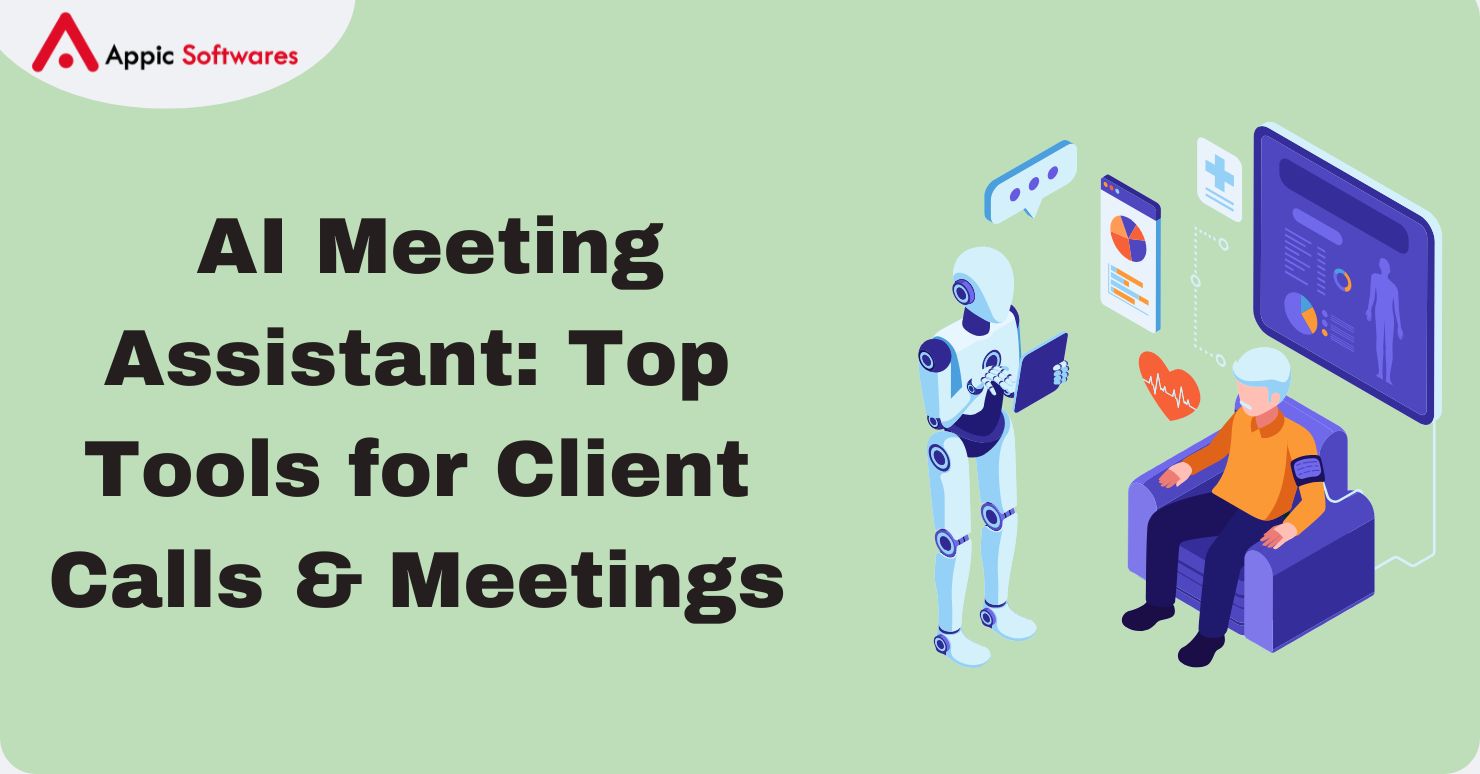
If you’ve ever done any modern web development, you’ve probably heard of REST and RESTful APIs. These two terms are often used interchangeably, but they aren’t exactly the same. Knowing the difference between REST and RESTful API isn’t just technical jargon; it can affect how well your application runs, how scalable your system gets, and even how easy it is for other developers to work with your code. Whether you’re building a full-stack project, a mobile app, or exploring the best cross-platform app development frameworks, understanding how REST and RESTful services differ is critical to designing robust backend APIs. So, let’s break it down, clear up the confusion, and look at what really works best for modern web applications.
What is REST?
Roy Fielding came up with the architectural style REST, which stands for Representational State Transfer, in his doctoral dissertation in 2000. It’s neither a protocol or a technology; it’s a set of rules for making web services. These rules enable developers make systems that can grow, don’t need to keep track of state, and are easy to use over HTTP.
REST is a means to organize how clients (like your browser or mobile app) talk to servers using common HTTP methods like GET, POST, PUT, and DELETE. When a system is considered to follow REST principles, it signifies that it follows a few important rules:
- Architecture of client and server
- Interactions without state
- Cacheability
- Standard interface
- System with layers
So, any web service that follows these requirements is a REST service. What happens when you use HTTP to make a REST service? That’s when we start talking about RESTful APIs.
What is RESTful API?
Let’s take a step further and define RESTful API. A RESTful API is an implementation of the REST architecture using HTTP. In other words, it’s an API (Application Programming Interface) that follows the REST principles.
So while REST is the theory, RESTful is the practical application.
Think of REST as the rulebook and RESTful APIs as teams playing by those rules.
For example, if you’re developing an e-commerce site and you want to retrieve a product’s details, a RESTful API would allow you to access that resource with a simple HTTP request like:
Here, you’re asking the server for the representation of a product with the ID 123.
That’s the beauty of RESTful APIs: they’re intuitive, predictable, and built on web standards.
That’s the beauty of RESTful APIs: they’re intuitive, predictable, and built on web standards. To explore how APIs drive online retail ecosystems then,
Check out: 17 Must-Have Ecommerce APIs To Get High ROI
REST vs RESTful API: The Real Difference

Now that we’ve defined both, let’s clear up a common confusion: REST vs RESTful API.
The difference is quite straightforward:
| Aspect | REST | RESTful API |
|---|---|---|
| Type | Architectural style | Implementation of REST architecture using HTTP |
| Definition | Set of design principles | Web service that adheres to REST principles |
| Nature | Conceptual | Practical |
| Dependency | Independent of HTTP | Based on HTTP methods |
| Usage | Theoretical design approach | Real-world web API following REST design |
| Example | Explains how APIs should work | API endpoint using HTTP methods like GET, POST |
Many developers mistakenly use REST and RESTful as synonyms. It’s like saying a recipe (REST) is the same as the actual dish you cooked (RESTful API). They are connected, but not the same thing.
Why the Confusion Between REST and RESTful?
Let’s face it, terminology in tech can be confusing. The phrases REST and RESTful services, RESTful API vs REST API, or even REST vs RESTful services pop up all over developer forums, documentation, and courses. Many articles mix up REST application with RESTful web services, making it difficult for beginners to understand what they’re actually building.
Here’s a simple way to keep it clear: whenever you’re using an API that follows REST rules and is designed using HTTP, it’s RESTful. If you’re just talking about the design principles, you’re referring to REST.
REST and RESTful Web Services in Modern Applications
The terms REST and RESTful web services have become the backbone of modern web development. From startups building MVPs to enterprises managing microservices, RESTful APIs are practically everywhere.
According to Postman’s 2024 State of the API Report, over 89% of developers use API first method. That’s a huge vote of confidence.
But why are RESTful services so dominant?
Here are some of the reasons developers and businesses choose RESTful APIs for their REST applications:
-
They work seamlessly over HTTP, the foundation of the web.
-
They’re easy to understand and integrate.
-
They scale well with modern cloud-based infrastructure.
-
They are stateless, making them faster and more reliable.
REST vs RESTful: Common Use Cases
In a modern web application, you might use REST principles to design the structure of your service, but you implement that design through RESTful APIs. For example, a mobile app might use RESTful APIs to send and receive data from a remote server—such as fetching a user profile or submitting a new blog post.
To illustrate the difference and clarify the usage, consider the following examples:
-
You’re designing a system for managing tasks. You plan out your endpoints based on REST—this is REST architecture in action.
-
You then create the actual API using HTTP methods like:
GET /tasksto get all tasks-
POST /tasksto create a new task -
PUT /tasks/2to update task #2 -
DELETE /tasks/2to remove task #2
This is now a RESTful API, because it implements the REST architecture in a real, usable form.
API vs REST
It’s also worth addressing the difference between API vs REST. An API is any interface that allows one system to interact with another. It could be based on REST, SOAP, GraphQL, or other models. REST, as discussed, is one particular architectural style for building APIs.
So technically speaking:
-
All REST services are APIs.
-
But not all APIs are RESTful.
Choosing between REST, GraphQL, or other methods often depends on your application’s data complexity and performance needs. If you’re just getting started, hiring expert mobile app developers can help you navigate the best tech stack choices.
Performance Stats: Why RESTful Still Dominates
Despite the growing popularity of newer technologies, RESTful APIs continue to dominate the web. Here are some eye-opening stats:
-
Over 90% of public APIs today are RESTful.
-
RESTful APIs load 12-15% faster than traditional SOAP APIs.
-
The average response time for a well-optimized RESTful API is under 200 milliseconds.
-
85% of developers in a Stack Overflow survey preferred RESTful services due to simplicity and documentation.
These figures demonstrate that when it comes to ease of use, speed, and widespread adoption, RESTful APIs are still on top.
REST vs RESTful in Cloud-Native Architecture
In today’s cloud-native environment, REST and RESTful APIs play a vital role. Microservices, for example, often use RESTful endpoints to communicate with each other. The stateless nature of REST services makes them easier to deploy across containers and manage in distributed systems.
That’s why companies like Netflix, Spotify, and Amazon use RESTful services to deliver high-performance applications to millions of users.
However, while RESTful APIs are easy to use, they can become unwieldy when dealing with complex data relationships. That’s where some developers turn to alternatives like GraphQL. But for most everyday applications, RESTful remains the default.
Still, for most web and mobile applications, RESTful APIs remain the standard. If you’re preparing your product for scale, then consider factors to consider in mobile app development.
The Evolution: Is RESTful Enough?
While we’ve praised the elegance and simplicity of RESTful APIs, it’s fair to ask: is RESTful enough for the future?
Some critics argue that RESTful APIs can be too rigid, especially in frontend-heavy apps where flexibility is needed. In such cases, fetching nested resources or limiting payload size becomes cumbersome with RESTful patterns.
Still, RESTful APIs have evolved. Modern implementations now support features like pagination, filtering, HATEOAS (Hypermedia as the Engine of Application State), and token-based authentication to meet these needs.
In essence, RESTful APIs are adapting, not disappearing.
What Works Better for Modern Web Applications?
So after all this comparison, REST vs RESTful, REST vs RESTful services, and RESTful API vs REST API, what works better for modern web applications?
Here’s the truth: You don’t have to choose between REST and RESTful, they work together.
REST is the guiding philosophy. RESTful APIs are the execution. You use REST to shape your design and RESTful APIs to build the actual system.
That said, if you’re building a modern web app in 2025, chances are you’re going to rely heavily on RESTful web services to deliver smooth, scalable, and intuitive experiences to your users.
Conclusion
It’s not simply a matter of semantics to know the difference between REST and RESTful. It’s also important for making apps that are better, faster, and easier to maintain.
RESTful APIs are the best way to go in today’s web world, when speed, scalability, and clarity are all important. They employ REST’s brilliant architecture in the real world to power everything from mobile apps to enterprise SaaS platforms.
So the next time someone asks you to explain RESTful API, REST vs. RESTful, or API vs. REST, you’ll not only know the answer, but you’ll also be ready to construct the future with it.
At Appic Softwares, we specialize in building high-performing, modern web and mobile applications using RESTful API architecture. Whether you’re launching a new SaaS product, or simply need to hire skilled developers in India, we’ve got you covered.
Need help figuring out the right architecture for your app?
FAQs
1. What is the main difference between REST and RESTful API?
REST is an architectural style, a set of principles used to design web services. A RESTful API is a real-world implementation of these principles using HTTP. So, REST is the concept, and RESTful is the practice.
2. Can RESTful APIs be used in astrology or niche apps?
Absolutely. RESTful APIs can be applied across industries, including niche domains like astrology. If you’re building a spiritual or astrological platform, you can streamline data delivery by integrating with our Astrology API services.
3. How can I hire developers to build RESTful APIs for my app?
You can hire top developers in India through Appic Softwares. Our experienced backend and full-stack developers can build reliable, secure, and scalable RESTful services tailored to your project needs.








